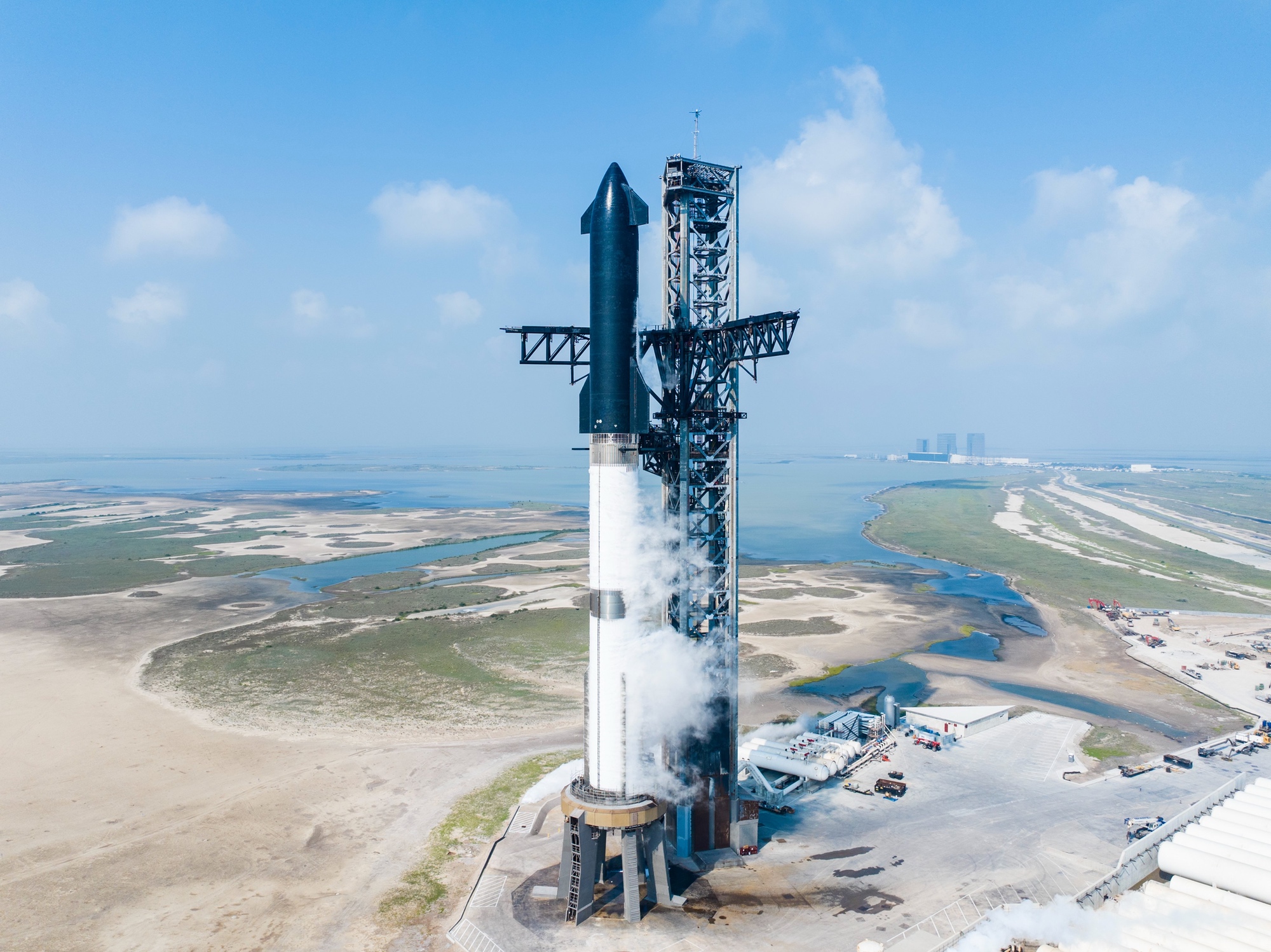LOS ANGELES — SpaceX has set a June 5 launch date for its next Starship integrated test flight, with a focus on demonstrating the ability to bring both stages of the vehicle back intact.
SpaceX announced May 24 it planned a launch of Starship on its fourth integrated flight test, also known as IFT-4, as soon as June 5 pending receipt of an updated Federal Aviation Administration license. That launch, like the previous three, will be from the company’s Starbase site in South Texas.
Having demonstrated that the Starship upper stage, launched by its Super Heavy booster, can reach space, the company now wants to show it can bring both the booster and the ship back intact.
“The fourth flight test turns our focus from achieving orbit to demonstrating the ability to return and reuse Starship and Super Heavy,” the company stated. “The primary objectives will be executing a landing burn and soft splashdown in the Gulf of Mexico with the Super Heavy booster, and achieving a controlled entry of Starship.”
Unlike the third test flight in March, SpaceX doesn’t plan any in-flight tests of Starship, such as opening the vehicle’s payload bay door or transferring propellant. The vehicle will fly a similar trajectory with a splashdown of the ship in the Indian Ocean. “This flight path does not require a deorbit burn for reentry, maximizing public safety while still providing the opportunity to meet our primary objective of a controlled Starship reentry,” the company stated.
SpaceX has made several upgrades to Starship hardware and software from the March flight, incorporating lessons learned from that mission. One change the company called out was that it will jettison the special interstage section between the booster and ship, designed to enable “hot-staging” where the ship ignites its engines while still attached to the booster. Disposing of that interstage after Super Heavy’s post-separation boostback burn, SpaceX stated, will “reduce booster mass for the final phase of flight.”
The company also released May 24 details about the issues it encountered on the third Starship flight. While Starship reached space, the vehicle was lost during reentry. The Super Heavy booster separately broke apart during the final phases of its descent over the Gulf of Mexico.
SpaceX said that Starship “began losing the ability to control its attitude” several minutes after engine shutdown, while coasting on a suborbital trajectory. Video of the flight showed the vehicle slowly rolling. That loss of attitude control led to an automated decision not to perform a planned engine relight.
“The lack of attitude control resulted in an off-nominal entry, with the ship seeing much larger than anticipated heating on both protected and unprotected areas,” SpaceX stated, with telemetry lost at an altitude of 65 kilometers.
The company believes the attitude control issue was caused by the clogging of valves in thrusters used for roll control. SpaceX has added more thrusters for redundancy while upgrading thruster hardware “for improved resilience to blockage.”
SpaceX said the Super Heavy booster fired 13 of its 33 Raptor engines after separation for a boostback burn, but six of the engines began shutting down, triggering an early termination of the boostback burn. Only two of 13 engines ignited for the final landing burn, as SpaceX attempted to a soft touchdown of the booster on the ocean surface. SpaceX said it lost contact with the booster 462 meters above the surface.
The engine failures, SpaceX concluded, were caused by filter blockage in liquid oxygen lines, keeping propellant from reaching the engines. SpaceX experienced similar problems on previous Starship launches and made changes to the engine design to try to prevent it. “Super Heavy boosters for Flight 4 and beyond will get additional hardware inside oxygen tanks to further improve propellant filtration capabilities,” SpaceX said, along with unspecified “additional hardware and software changes” to improve the reliability of Raptor engine startup.
SpaceX Chief Executive Elon Musk said in April that he hoped on the upcoming flight to demonstrate that the Super Heavy booster can land on a “virtual tower” in the Gulf of Mexico. “If the landing on the virtual tower works, then we will actually try on Flight 5 to come back and land on the tower” at Starbase, he said, part of the company’s plan to rapidly reuse Starship vehicles. “That is very much a success-oriented schedule, but it is in the realm of possibility.”
Related
Read the original article here
